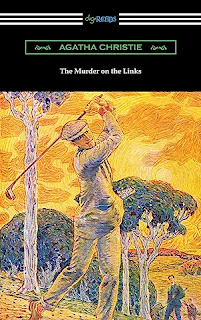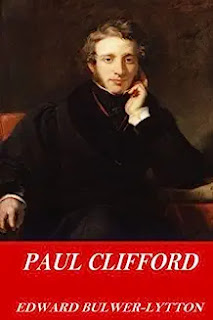Do you follow modern conventional wisdom to begin “in media res” (Latin for “in the middle of things”) or do you go for a soft beginning which sets the stage?
Most of us manage to avoid the worst cliché openings, like
having our protagonist examine themself in a mirror to describe the finely
chiseled features, brooding eyes, etc.
Then there’s the “in the car on the way to the scene” tactic, where two characters lay out the background the author wants us to know before we get into the action.
Even an apparent action beginning can be stale. How many
times can we open with a crime scene, emergency vehicles swarming, lights
flashing, while our protagonist talks on the phone about the unidentified young
woman whose mutilated body is the subject of all the attention?
I’ve been rereading some of my favorite classics, and I’ve
been struck by the variations in beginnings.
In Dick Francis’s Nerve, he starts out with: “Art Mathews shot himself, loudly and messily, in the center of the parade ring at Dunstable races.” That’s in media res.
Many of the classics from the most respected authors,
however, go to great pains to establish background, setting and characters for
their stories. I’m well into chapter three of Patricia Wentworth’s Touch and
Go, having a pleasant time but not encountering anything that might be
labeled a “hook” in today’s parlance.
Agatha Christie addressed this very dilemma of how to start
a story in Murder on the Links, when she opens the novel with: “I
believe that a well-known anecdote exists that a young writer, determined to
make the commencement of his story forcible and original enough to catch and
rivet the attention of the most blasé of editors, penned the following
sentence: ‘Hell,’ said the Dutchess.”
She goes on to give us information and background, with some conversation that might be considered intriguing, but nothing approaching action for the rest of the chapter.
Ngaio Marsh and Margaret Yorke used prologues effectively.
Some authors today also use that technique, but in many quarters, it’s frowned
upon, and new authors use it at their own peril.
In Arthur Conan Doyle’s A Study in Scarlet, Dr.
Watson begins this first Sherlock Holmes tale with a rambling account of his
own history and how he met Holmes. The story itself is not broached until well
into the book.
I have to confess that some of my favorites, Ellis Peter’s Cadfael series, often begin with a lengthy historical-information dump that I find mind-numbing. I skim over the beginnings until I get past that.
That’s probably true for authors whose readers are so familiar
with that author’s work that they are confidently looking forward to a
satisfying story.
For many of the rest of us, maybe not so much.
My own tendency is to make an attempt to provide enough
background so that the reader can make sense of the story. However, I have
learned that although that is how my first draft starts, I need to cut to the
actual story (page three, perhaps?) immediately. The original start does give
me information to be woven in, as unobtrusively as I can manage.
Different authors use different beginning techniques.
There’s no “right way” to start a story. If it works for that author and the
readers, it was a successful beginning.
I’m sure most of us try to avoid the purple prose of the “It was a dark and stormy night…” opening which Edward Bulwer-Lytton started his 1830 novel Paul Clifford.
The novel itself was quite a success.
That beginning is so classic it inspires Snoopy, sitting
with his typewriter on top of his doghouse, to begin his novel with it. And the
Bulwer-Lytton Fiction Contest was started in 1982 at San Jose State University.
It challenges entrants to compose “the opening sentence to the worst of all
possible novels.”
The entire first sentence of Paul Clifford reads: “It was a dark and stormy
night; the rain fell in torrents—except at occasional intervals, when it was
checked by a violent gust of wind which swept up the streets (for it is in
London that our scene lies), rattling along the housetops, and fiercely
agitating the scanty flame of the lamps that struggled against the darkness.”
And,
just to illustrate the truism that the exception proves the rule, Madeleine
L’Engle deliberately begins her famous A Wrinkle in Time” with, “It was
a dark and stormy night.”





As a reader, the data dump is my least favorite beginning. Yes, we often need that information, but weave it in so I care. The opening lines that really catch your attention are usually my favorites, but I also like it when the opening paragraph or two sets you up for a surprise in the last sentence.
ReplyDeleteI'll share my least favorite: the chapter from the middle of the book as the opening. Whenever I see this, I assume the author couldn't figure out a way to start the story that would capture my attention. Instead, they had to cheat by pulling an exciting incident from the middle of the story in the hopes I would be so interested in the hows and whys of that incident that I would be willing, anxious even, to wade through a bunch of blase backstory to get back to that incident.
ReplyDeleteWhich isn't to say, great authors can't pull the purloined chapter off. They don't bore me on the way back to the incident. But if I start losing interest, I put the book down and move on to something else.
I agree with Mark. A bit of action or dialogue to catch my attention works better than a data dump.
ReplyDeleteIf I can have my MC find a dead body or have some kind of "eek" moment by the end of Chapter One, I'm super proud of myself. I'm a reformed data dumper, as I'm someone who likes knowing a lot up front LOL
ReplyDeleteI love to open a novel with a conversation. It draws you right into a situation that may or may not have anything to do with the first murder.
ReplyDeleteThese are such great examples, KM!
ReplyDeleteBeginnings are so hard to write. I like to start with dialogue - it can show you a lot about a situation and character without (I hope) turning into the dreaded data dump.
What a delightful post! I’ve long held that there is a vast difference between British cozy mysteries and US cozy mysteries. We Yanks tend to dive right into the action only meeting the victim in retrospect. The Brits establish a core group. The first part of the mystery is who gets it, the second is who did it. As for me? I write the first one to three chapters knowing I’m the only one who’ll see them. Does give me a lot of information to weave in elsewhere.
ReplyDeleteGreat post, Kathleen. After re-writing the first chapter in my first book at least 500 times, I went with a "grabber' interior design term for the first line of a conversation.
ReplyDeleteI did the same for my second book,and found out paint color names are copyrighted...so I had to think of my own color.
I've got to second what Jim said. I call the scene from the middle (or even end) of a book as the prologue the Alias syndrome because they did it in just about every episode in season 3. Can it be used well? Sure. But does it feel like lazy writing and put me on high alert right away? Absolutely.
ReplyDeleteGreat writers not only know what style suits their voice (and audience) they pull it off while tempting their readers to continue to find out "what happens next."
ReplyDeleteThanks for all the comments.